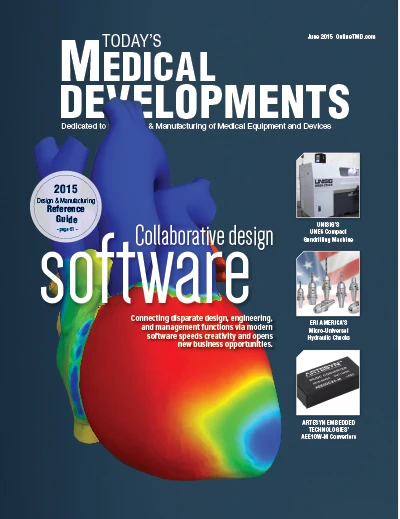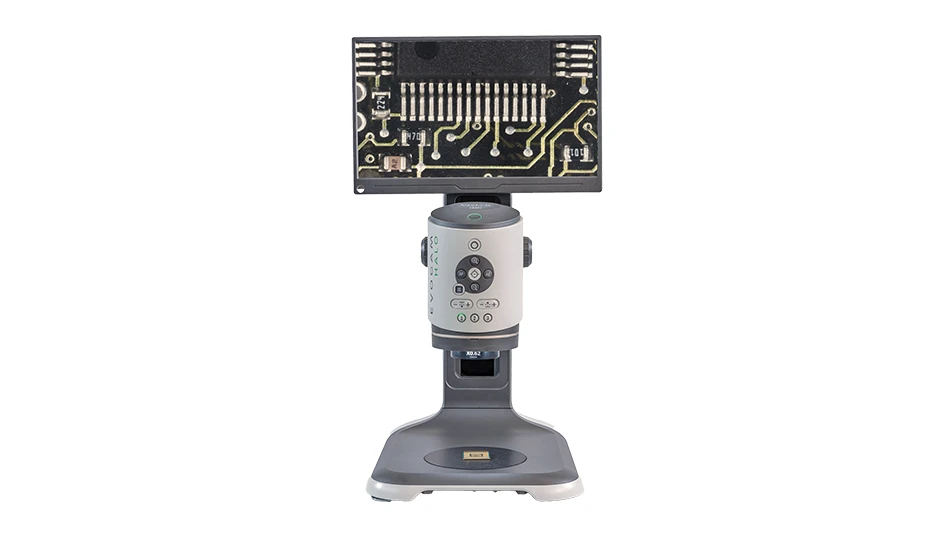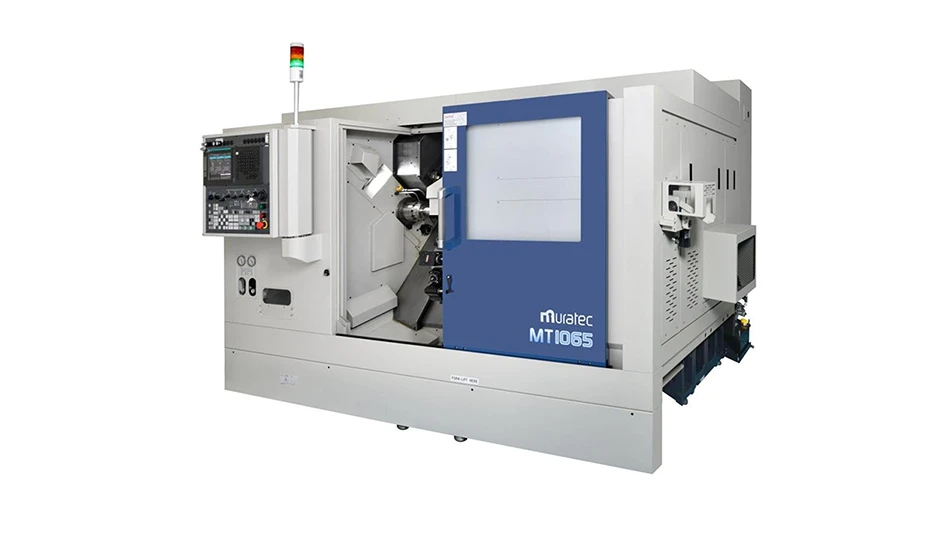 Every day, millions of people log onto distributed computing systems and collaboratively design three-dimensional (3D) systems. But they aren’t CAD designers working on new facial reconstruction implants, diesel fuel rails, helicopter rotors, or wind turbine blades.
Every day, millions of people log onto distributed computing systems and collaboratively design three-dimensional (3D) systems. But they aren’t CAD designers working on new facial reconstruction implants, diesel fuel rails, helicopter rotors, or wind turbine blades.
They’re children.
Gathering online to design buildings and cities, more than 100 million people worldwide are registered users of the low-resolution video game Minecraft. In early 2015, the pocket edition of the game for iOS and Android devices passed the 30 million download mark. Called by some the Legos of the 21st century, Minecraft is more than just a game, it’s a sign of where design is going.
Programmers of modern design software systems say Minecraft’s explosive popularity has shown that it can be easy to work across vast geographic distances using shared resources. Multiple players simultaneously work on the same overall design, watching as the changes one user makes ripple through the house or city that they’re building – a level of real-time collaboration that many professional design teams can’t achieve.
In practical terms, that means the days of designers managing their own files and working on discreet systems are numbered. The future is in connected, cloud-based offerings where designers’ different sub-systems will work from the same master files – a change in the basic architecture of the finished product will ripple through every component instantly instead of having to be reconciled against multiple, different versions.
“When we came off the drafting board into CAD, we were looking for ways to get rid of the roadblocks in design,” says Carl White, senior director of manufacturing engineering products at software provider Autodesk. “One of those last roadblocks is fitting different designs together. With the cloud, you’re not dealing with different designs. You have one version of the product, and everyone’s using that.”
Collaborative opportunities
With design engineers working off of a single master file, opportunities open up throughout an organization says Ken Clayton, vice president of Dassault Systèmes’ 3DS professional channel. With that “one single view of the truth,” expanded opportunities could include:
- Manufacturing engineers could study early design iterations, making sure that the styles and forms being considered can be cost-effectively built.
 Materials specialists could look for opportunities to shave weight out of systems by replacing heavier materials with lighter ones. They could then test those alternative material choices with advanced simulations.
Materials specialists could look for opportunities to shave weight out of systems by replacing heavier materials with lighter ones. They could then test those alternative material choices with advanced simulations.- Purchasing managers could examine material costs for various parts, recommending less-costly alternatives for any exotic choices from designers.
- Safety experts could examine potential designs for obvious flaws and begin use-and-abuse simulations.
- Marketing and advertising departments could begin mocking up brochures and educational material early in the process.
- Financial planners and fiscal executives can track the progress of a design through multiple departments, getting a much clearer picture on when to expect manufacturing and sales to begin.
“Our platform of 12 software applications covers 3D modeling (SOLIDWORKS, CATIA, GEOVIA, BIOVIA); simulation (3DVIA, DELMIA, SIMULA); social and collaboration (3DSWYM, 3DXCITE, ENOVIA); and information intelligence (EXALEAD, NETVIBES),” explains Monica Menghini, Dassault executive vice president and chief strategy officer. “These apps together create the experience. No single point solution can do it – it requires a platform capable of connecting the dots. And that platform includes cloud access and social apps, design, engineering, simulation, manufacturing, optimization, support, marketing, sales and distribution, communication (PR and advertising), PLM – all aspects of a business; all aspects of a customer’s experience.”
A lot has to change to achieve these goals. Corporate department structures typically don’t support having design engineers share information with sales/marketing and regulatory/safety departments. But technologically, says Dassault Systèmes’ vice president of design experience, Anne Asensio, there’s nothing preventing such a shift into more collaborative environments. The design process throughout an organization can speed up considerably because interested parties can have their say early in the process – reducing the need for rework and redesign when those great visual features turn out to be impossible to machine, or when components become a safety concern in crash testing.
Visualizing the human heart Dr. Steve Levine developed The Living Heart Project for personal reasons; his daughter was born with reversed heart chambers. As chief strategy officer of Dassault Systèmes’ SIMULIA, Levine pushed for a 3D realistic simulation model of a whole human heart. The Living Heart Project was developed with a multidisciplinary team of heart experts to help combat cardiovascular disease. Levine notes that this is launching the next frontier in diagnosing, treating, and preventing heart conditions through personalized, 3D virtual models. The Living Heart Project unites cardiovascular researchers, educators, medical device developers, regulatory agencies, and practicing cardiologists to develop and validate highly accurate personalized digital human heart models. These models will establish a unified foundation and serve as a common technology base for education and training, medical device design, testing, clinical diagnosis, and regulatory science – creating an effective path for rapidly translating current and future innovations directly into improved patient care. With Levine’s lead, and personal connection, this project has ramped up fast. Late last year at the company’s 3DEXPERIENCE Forum in Las Vegas, Bernard Charles, president and CEO, announced that the company had signed a 5-year collaborative research agreement with the FDA. Initially targeting cardiovascular devices used to treat heart disease, specifically testing device insertion, placement, and performance, development team sees this as a path to expediting the approval process of medical devices, spurring innovation, enhancing patient reliability, and reducing costs. Part of the development team for The Living Heart Project is the Medical Device Innovation Consortium (MDIC) (http://www.mdic.org). Utilizing this collaborative approach for medical device advancements, 3D modeling brings a noninvasive approach to advance treatment without using patients for trial studies. |
Resistance to change
Putting master design files onto cloud servers is the first step toward that goal, and this is where experts say some designers resist a changing work environment.
Autodesk’s White says the big concern is not having direct access to files. Design engineers tend to be responsible for their designs, so the idea of other people fiddling with their creations doesn’t sit well.
“In a lot of cases, people aren’t being given much of a choice,” White says. “Decisions have to be made much faster in the market these days, so companies are adopting these tools. For us, the key is to make the designer comfortable. Everything has to be traceable. With every change, it has to be clear who made it and when.”
Getting other departments interested in having access to design files is a much easier task, he adds. “If corporate people can get more actionable data at their fingertips, they’re on board.”
Advances in simulation software have helped create demand within companies for more data sharing. Stress-testing or crash-testing products is an expensive process that generates very specific data, but physical testing is costly and has limitations. Virtual testing, on the other hand, is inexpensive and data rich, giving designers the ability to test a much wider range of iterations and concepts.
 Eric DeHoff, principal engineer and computer-aided engineering technical leader for Vehicle Structures Research – Automotive Safety at Honda, says modern simulation software is so detailed it can “predict material fracture or spot-weld failures. Success is based on confidence in computer-aided engineering methods.” Dassault Systèmes’ 3Dxcite has grown from color-coded engineering renderings to scenes of photographic realism. “What took an expert 6 weeks before, a non-expert can do in 2 days.”
Eric DeHoff, principal engineer and computer-aided engineering technical leader for Vehicle Structures Research – Automotive Safety at Honda, says modern simulation software is so detailed it can “predict material fracture or spot-weld failures. Success is based on confidence in computer-aided engineering methods.” Dassault Systèmes’ 3Dxcite has grown from color-coded engineering renderings to scenes of photographic realism. “What took an expert 6 weeks before, a non-expert can do in 2 days.”
The simulated crash resembles a real crash, revealing what high-speed cameras on an actual car can’t. It can isolate the chassis or cabin, remove the collision barrier from the visualization, and show hidden components within structures, such as parts inside doors.
Engineers can substitute a single physical crash with dozens of simulated crashes to understand actual vehicle behavior, without the time or cost.
Autodesk’s White says photo-realistic, data rich simulation is the gateway feature that is encouraging more companies to seek holistic design software that combines what previously had been several discreet tools. Once companies start down that connected path, however, they begin to see more opportunities to work across departments and gain more value from their most important assets – the intellectual property stemming from design and engineering expertise.
3D 4-chamber heart scientifically validated Just one year after officials from Dassault Systèmes announced the Living Heart Project, the first 3D simulator of a 4-chamber human heart is available. Powered by Dassault Systèmes’ 3DEXPERIENCE platform and SIMULIA software, the high-fidelity scientifically validated human heart is the first product of its kind. With this model, device manufacturers, researchers, and medical professionals will be able to perform virtual tests and visualize the heart’s response in ways that are not possible with traditional physical testing. As delivered, the Living Heart model represents a baseline healthy heart, which can also be used to study congenital defects or heart disease by modifying the shape and tissue properties in an easy-to-use software editor. In addition, medical devices can be inserted into the simulator to study their influence on cardiac function, validate their efficacy, and predict reliability under a range of operating conditions. The Living Heart Project leverages crowdsourcing of its members to build its models while protecting the intellectual property of each member. The project’s 45 current members include the Food and Drug Administration (FDA) and the Medical Device Innovation Consortium, whose focus is regulatory science, as well as research organizations, technology providers, cardiologists, medical device manufacturers, and hospitals such as St. Jude Medical and Mayo Clinic. This crowdsourcing approach has enabled the heart model to be independently tested and included in peer-reviewed scientific journals by project members, and enabled Dassault Systèmes to deliver the first iteration of the project’s commercial product on an accelerated schedule. This achievement demonstrates the effectiveness of the project’s approach and reaffirms the opportunity for simulation to address meaningful challenges in cardiovascular disease. The Living Heart model includes well-defined anatomic details of the heart as well as proximal vasculature, such as the aortic arch, pulmonary artery, and superior vena cava (SVC). The dynamic response of the heart model is governed by realistic electrical, structural, and fluid (blood) flow physics. In addition to the general availability of the heart simulator, the members of the “Living Heart Project” have collectively identified the highest priority cardiovascular applications for it and associated technological advancements, which will help shape the functionality of future versions of the simulator. http://www.3ds.com/heart |
Dassault Systèmes
http://www.3ds.com
Autodesk Inc.
http://www.autodesk.com
About the authors: Elizabeth Engler Modic and Eric Brothers, are editors of TMD and can be reached at 216.393.0264, emodic@gie.net; or 216.393.0228, ebrothers@gie.net.

Explore the June 2015 Issue
Check out more from this issue and find your next story to read.
Latest from Today's Medical Developments
- Dassault Systèmes enters next phase of Living Heart Project with AI-powered virtual twins
- Bruker’s X4 POSEIDON advanced X-ray microscope
- #53 - Manufacturing Matters - 2024 Leaders in Manufacturing Roundtable
- Festo Incredible Machine celebrates its premiere at the Hannover Messe
- Join us for insights on one of the hottest topics in manufacturing!
- Turnkey robotic systems are already behind the times
- You can still register for March’s Manufacturing Lunch + Learn!
- HERMES AWARD 2025 – Jury nominates three tech innovations





